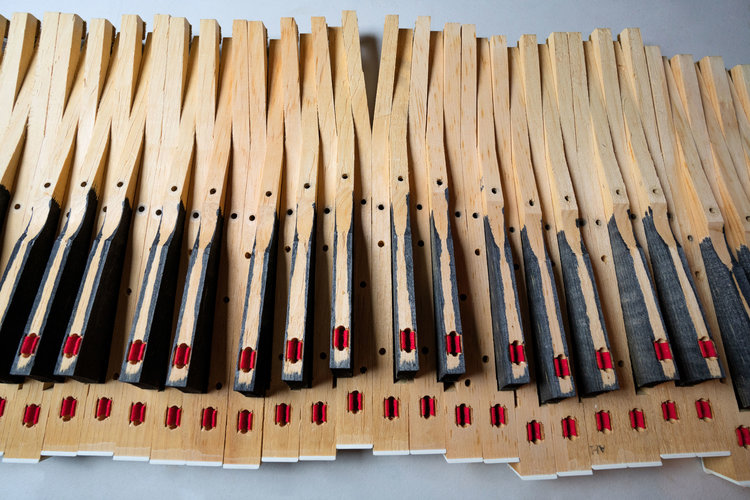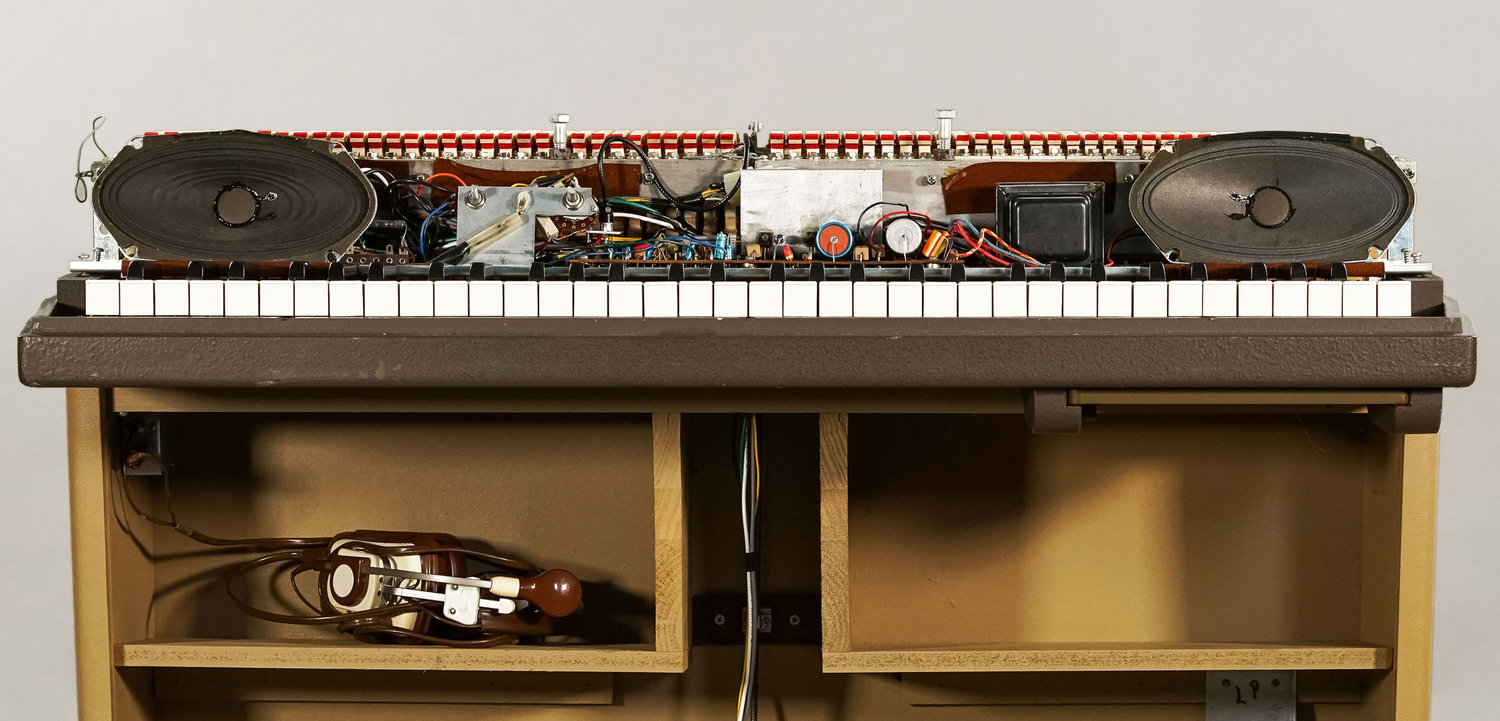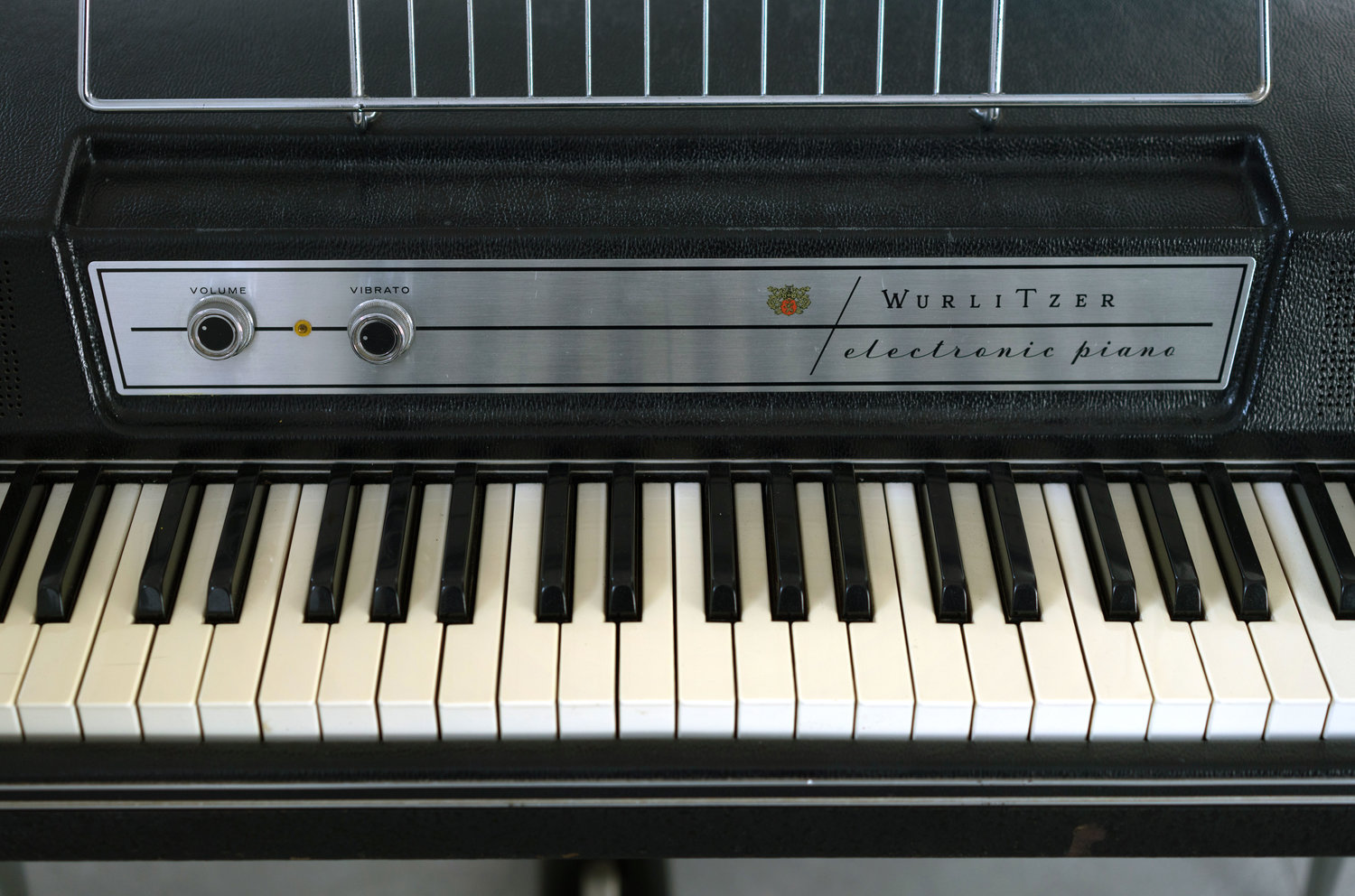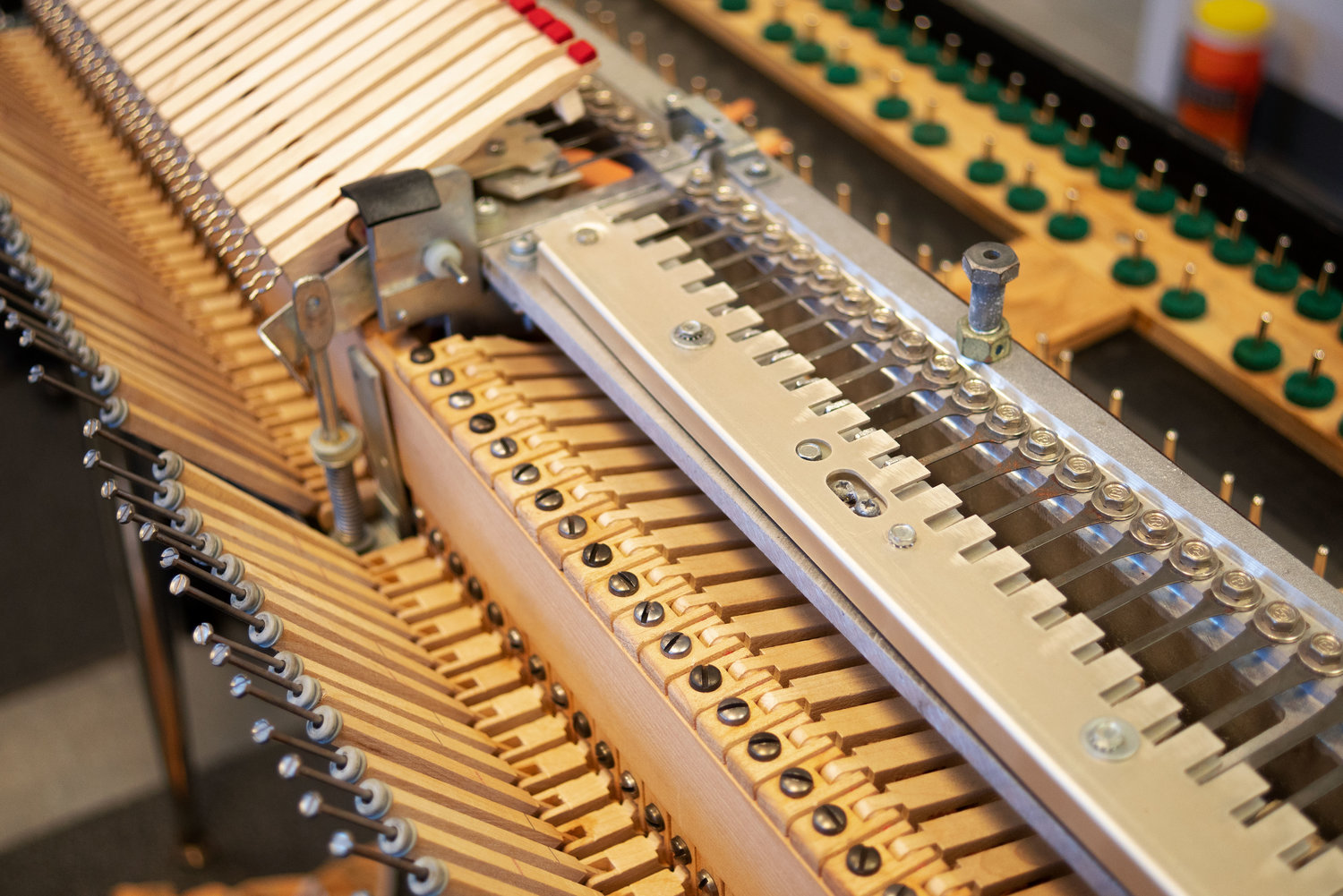Why Are My Wurlitzer's Keys Sticking?
There are many different problems that could make a Wurlitzer’s keys stick. Because sticky keys are so case-specific, there is no cure-all solution. However, here are some ideas as to why your Wurlitzer’s keys are sticking.
Defining Sticky Keys
What is a sticky key? If you press a key and it never returns, it’s a sticky key and this is the guide for you. But if your key has any other behavior, take note of it. The more specific your problem is, the easier it will be to solve. This includes:
Keys that return very slowly (discussed below)
Keys that feel stiff and unresponsive, but not to the point of sticking
Keys that have a lot of side-to-side motion
Keys that can’t be pressed (i.e., keys stuck in the “up” position)
Notes that sustain even when the damper pedal is not engaged
What if the key returns on its own, but very slowly? This is almost always a problem with the key bushings. The wood around the bushings is often swollen to a point where the key’s motion is restricted, but not to the extent that the key cannot return at all.
What if the key only sticks when the damper pedal is engaged? The dampers provide a little bit of counterforce that helps the key travel. When the pedal is pressed, the dampers are lifted and any assistance that they are providing the key is removed. This isn’t a problem when the keyboard is in great condition. However, if the bushings are a little tight, the keys may rely on the dampers for their full range of motion. Then, when the pedal takes the dampers out of the picture, the keys cannot function correctly on their own. We have a bushing gauge tool in our shop that is used to check bushings for proper width. This tool is also used to install new key bushing felt.
Sticky Keys & The Keyboard’s Overall Condition
Was the Wurlitzer previously working fine? There’s a difference between sticky keys in a Wurlitzer that has recently worked, and sticky keys in a Wurlitzer that you just dragged out of a basement. If your Wurlitzer’s sticky keys are a new development:
Have you recently moved the keyboard? If your Wurlitzer was recently shipped, or even if you just transported it across town, it’s possible that a screw came loose while it was in transit. Ensure that all of the screws in the mechanical action are appropriately screwed down, paying close attention to the screw holding the hammer in place of the key in question.
Has anything about the keyboard’s environment changed? Wurlitzer keys are made from wood, so they’re susceptible to excess humidity. This can happen if the seasons change, or if you move the keyboard to a different, more damp, room. If the Wurlitzer’s environment is too humid, the wood can swell so much that the key can’t move freely along its key post. One solution is to - very gently - use key-easing pliers to compress the wood around the key bushing. Humidity also isn’t great for the electronics, so you might also consider taking steps to de-humidify the room.
Did you spill anything in the keyboard? You can also create your own high-humidity event by spilling a drink in your keyboard. Liquids can cause the wood of the keys to swell. It can also cause key bushing felts to become loose or fall out. (If you do spill something in the keyboard, you should take all the keys out to make sure it dries thoroughly.)
Have you had the Wurlitzer serviced recently? If not, the sticky keys may be telling you that your Wurlitzer just needs a little maintenance.
Is your Wurlitzer a new acquisition, or has it been in storage or neglected for a long time? On the flip side, if you’re not sure whether the Wurlitzer has been recently working, because you just got it (either from a seller or out of storage), you should give your keyboard a general service before addressing any specific mechanical problems, like sticky keys. Sometimes, the routine fixes involved in servicing can resolve minor mechanical problems like sticky keys. At the very least, the process may expose any obvious problems and reduce your troubleshooting time. Servicing should include:
Cleaning. Excess dirt and debris can often cause keys to stick, as well as a variety of other problems.
Regulation. The touch-responsiveness of the keyboard is determined in part by two regulating screws: the let-off screw on the whip, and the lost motion screw at the far end of the key. If these screws are not correctly set, a range of odd behavior could result. These malfunctions are usually more subtle than sticky keys, but, if you haven’t done it already, regulating your keyboard is a great place to start.
Lubrication & shrinking of action centers. This involves squeezing a small amount of a solution into the action centers (i.e., the moving parts) of the mechanical assembly. This relaxes the joints and helps the mechanical parts move more consistently. The Wurlitzer service manual recommends a mixture of silicone and Naptha. You could also use ProTek, a piano lubricant which is specifically designed to lubricate and shrink action centers and provide a protective coating on action center felt. To reach small action centers effectively is is important to use an applicator for lubricant solutions.
Likely Causes of Sticky Keys in a Wurlitzer
Rusted or misaligned key posts. Key posts are small metal rods that keep the keys in place. They also determine the key’s vertical travel. If the key posts are rusty, loose, or crooked, the key will stick when pressed. we clean all key posts with metal polish (or Evapo-Rust if they are extremely rusty) on every Wurlitzer that we restore.
How to de-rust key posts. It is important to avoid getting too much solution into the keybed itself. Our favorite de-rusting product is Evapo-Rust, and we’ll use it here if the key posts are really ugly. However, if the key posts are only lightly rusted, we’ll use a metal polish with a paste-like consistency, such as Maas, because it is easier to control. Apply the polish and rub it in with a microfiber cloth. Next, buff it out with a clean section of cloth. When the key posts are clean, apply a drop of silicone. Then, replace the key and press it several times.
Repairing mis-aligned key posts. If the key bed is cracked or damaged, the key posts can become loose. If the crack is small, you may be able to fix it with wood glue. If it is large, you may need to replace the entire keybed. Also, check to ensure that the front rail key posts are aligned correctly.
Swollen or water-damaged keys. Water-damaged keys can swell, causing them to become too tight around the key post. In this case, gently compress the wood around the bushing with a key bushing tool. This is a pair of pliers that has one large, flat side. The flat side provides support, so that you don’t crack the wood when you squeeze the pliers. Still, you should be very gentle when using this tool, because the keys are old and delicate and can easily be damaged.
Missing or damaged key bushings. If the felt around the key bushing is missing or loose, it may be interrupting the key’s vertical travel along the key post. Key bushing felt can be replaced, either for the affected keys only or across the entire piano.
How to replace old key bushings. First, remove the old felt. Loosen the old glue with a mixture of alcohol and water. Then, steam the felt off by briefly heating it with a soldering iron. If any traces of glue or felt remain, remove them with a small file. Adhere the new felts with PVC-E glue, and clamp them in place for several hours. Once you remove the clamps, allow the glue to continue to dry completely before replacing the key in the key bed. You can purchase a re-felt kit including clamps from us here.
Damaged mechanical action. Examine all of the components in the mechanical action. If they are broken, or if they have loose or missing felt, they could be causing the keys to stick.
Further Reading
Browse all of our articles on restoring vintage gear. Or, click on an image below.








